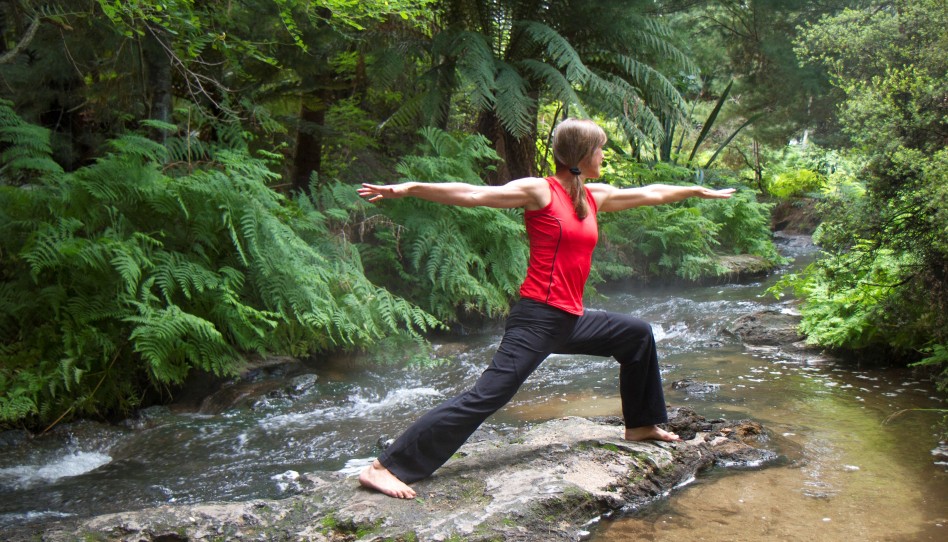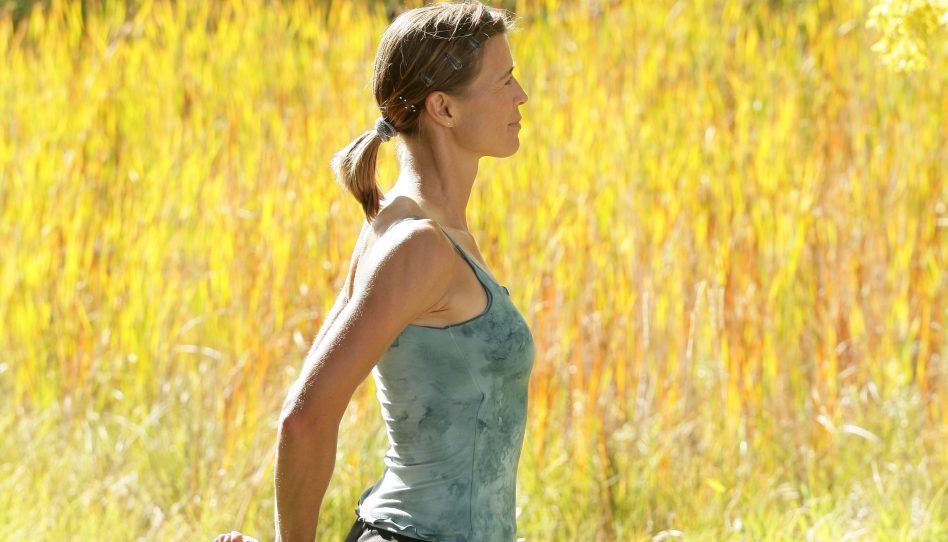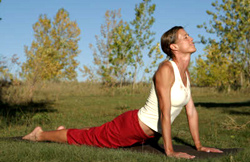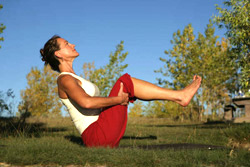Yoga — One Path, Many Styles (Part III)
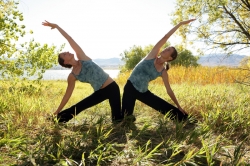
Part III of “YOGA—One Path, Many Styles” will conclude our little journey to welcome you to different yoga styles. We hope we have introduced to you some interesting and exciting yoga practices. For this article we chose Integral Yoga and Viniyoga, because of their slow pace and suitability for students new to yoga practice.
We recognize that there are many more yoga styles to choose from. Some of your questions might be: What is the right yoga style for me and where can I start practicing? In our summary at the end of this article we try to give you a few guidelines and some practical answers.
Integral Yoga
Sri Swami Satchidananda, the late founder of Integral Yoga, wrote “the goal of Integral Yoga, and the birthright of every individual, is to realize the spiritual unity behind all the diversities in the entire creation and to live harmoniously as members of one universal family.” Satchidananda believed that true and lasting happiness is our very own nature: what we seek is already found within. Since it is infinite, it can be experienced only when we rise above the finite personality. Yoga is both this experience and the means to this experience.
Practice: A typical class will include a well-paced variety of asanas, often with pauses between the asanas to absorb the effects of the posture, allowing for a deepening of the practice. There is a focus on learning to use the asanas and breathing practices to connect with the deeper dimensions of your nature. Because a class almost always contains breath work (pranayama), it’s a great place to learn these techniques.
Benefits: Integral yoga offers students a strong foundation in body alignment, breath work and other yogic principles. It is a synthesis of methods that develops all sides of the student. They believe your yoga practice can cultivate the awareness and stillness you need to recognize the spirit within your self and within the world. Like other forms of yoga, other benefits are increased strength, flexibility and stability of the body.
Who is it for? This yoga style is beneficial for students of all levels. Because it is consistently a gentle, more meditative practice it is especially suitable for those just starting out, those recovering from illness or injury or participants who simply want a calming, healing experience.
More information:
www.Iyiny.org/About-Us/Integral-Yoga-Network
Integral Yoga Hatha by Sri Swami Satchidananda
The Yoga Sutras of Patanjali Translation and Commentary by Sri Swami Satchidananda
Viniyoga Yoga
Viniyoga is a therapeutic style of yoga taught by the late Sri. T. Krishnamacharya in the 70’s, a descendant of the legendary yogi Nathamuni, who lived in the 9th century, according to the Viniyoga web site. T.K.V. Desikachar, Sri. T. Krishnamacharya’ son, developed his father’s teachings further, which are based on his father’s lifetime studies of Patanjali’s Yoga Sutras. Viniyoga is known as a therapeutic yoga style with gentle-flowing movements, taught in a slower pace than Ashtanga Yoga. Postures can be modified to each student’s unique physical and personal needs. In addition students focus on the breath while practicing.
Practice: This more relaxed yoga style can be enjoyed through it’s unique way of practice: While focusing on the breath – the breath is leading each movement – the student learns that, compared to other yoga styles, the inhalation and exhalation and the ratio between inhalation and exhalation are timed. The postures (asanas) can be modified to each student’s unique physical needs. Some asanas in Viniyoga are practiced with bent legs, which is easier to manage for the student; in comparison students would more fully extend the legs in Iyengar Yoga. Meditation and chanting can be added to each yoga practice.
Benefits: Due to Viniyoga’s gentle and therapeutic character it is taught in small private classes, also frequently on a private one-to-one basis. The teacher can focus on each student to develop a unique practice, tailored to the individual’s physical needs for better healing and flexibility, and to enhance other needs of the student.
Who is it for? We recommend Viniyoga to beginning yoga students as well as to students, who are in the process of recovering from injury or illness. In addition, we would suggest this yoga style to all students of all levels who seek to achieve more inner stillness and would like to more easily adapt to changes in their lives.
More information:
Yoga for Wellness by Gary Kraftsow, student of T.K.V Desikachar
The Viniyoga of Yoga, Applying yoga for healthy living by T.K.V. Desikachar, Kausthub Desikachar, and Frans Moors
Sivananda Yoga, Integral Yoga, Yoga for Athletes, Ashtanga Yoga, Viniyoga…
You don’t know which style might be good for you? Where should you go to find a class, a teacher, a yoga location close by? Would it be better to buy a book or a yoga video first before attending a yoga class?
To start your yoga practice make sure you analyze some of the aspects of why yoga might be the right choice for you. This could be: recovering from illness, feeling tired or unmotivated, stressed out or in an instable mental situation. In addition, maybe you would like to enhance your flexibility and strength, feel more inner peace or improve breathing techniques and capacity, or other reasons to name just a few. Our article, “Benefits of Yoga,” will give you more insight on why yoga is so positive. (For more information on “Benefits of Yoga” click “yoga” on the “tips section” of our Web site)
We believe from experience that yoga books and videos can be a good place to begin to know more about yoga. We wouldn’t suggest that you use them alone. A qualified teacher is always the best! Teachers can easily help you to execute the postures correctly, and to learn the skills of pranayama and meditation, as well as guide you in choosing the right yoga practice for you. You should feel good with your teacher.
Below are some other check points to help you on your way:
- Do you feel comfortable?
- Do you have to imitate other students in your class, or are you getting enough direct attention from the teacher?
- Was the pace of the class or level of difficulty satisfactory?
- Did you feel hurt the next day?
- Was it the right size of class for you or would you prefer next time a smaller class, one on one instruction or maybe even a larger class?
Getting Started
Maybe a friend could take you to a yoga class, or you heard about a good yoga studio close by from someone whose opinion you value.
If you need more help finding a school that practices the style of Yoga you are looking for, you can check yoga web sites. We have added sites to each yoga style to help you find more information about locations and yoga studios. You will meet wonderful people – yogis and yoginis – we wish you the best of good luck!
Namaste!
Updated December 16, 2018
- Posted June 28, 2006
© Copyright 2006-2024 by Take The Magic Step®. All Rights Reserved.
